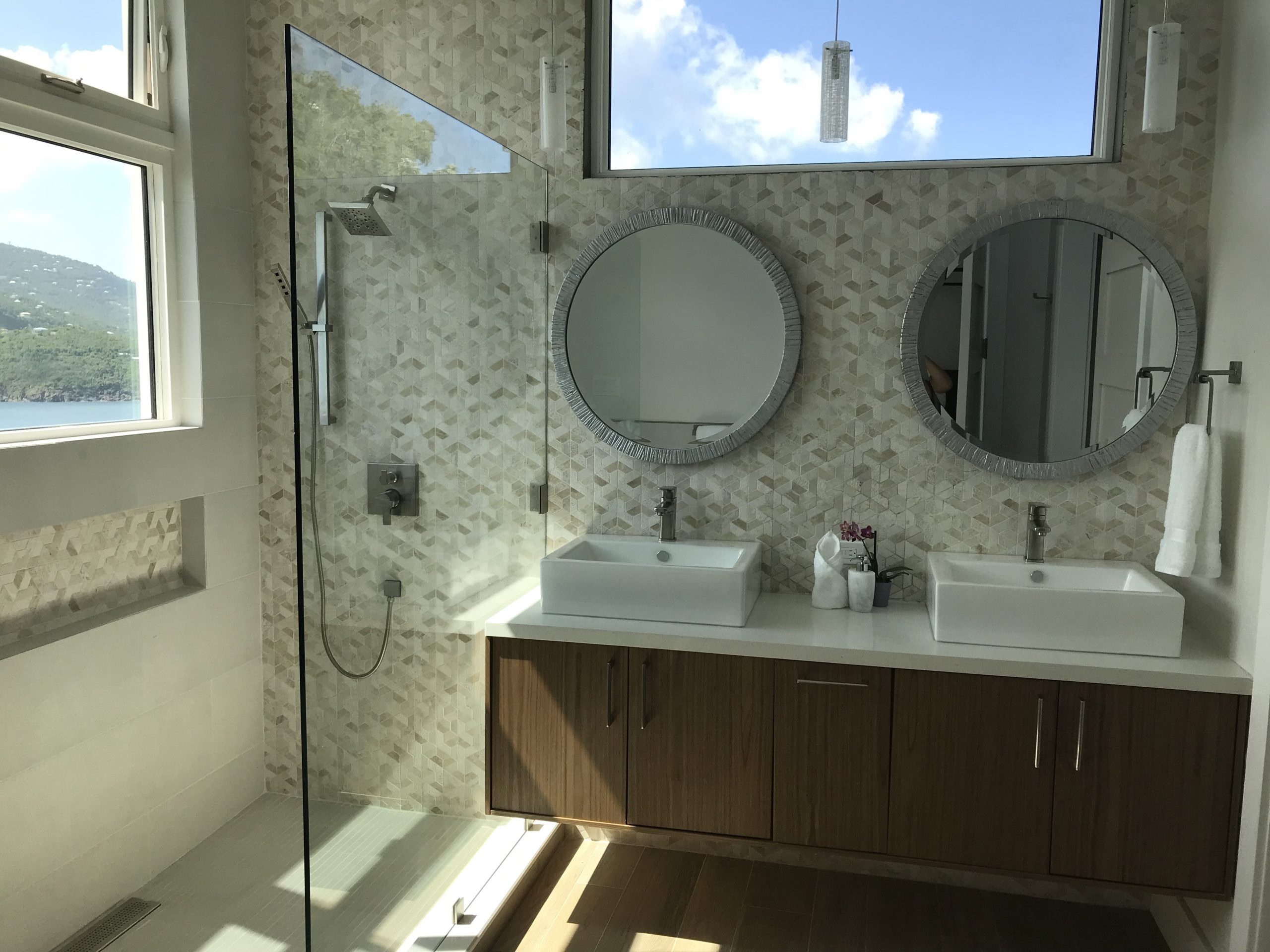You may not know this about me, but I used to live on a small sailboat.
In fact, I first came to the Virgin Islands because I wanted to sail every day. I thought my visit was only going to last one season, but then I met David and we fell in love and decided to make the Virgin Islands our home. David was living on his sailboat at the time, and I moved onboard with him after our wedding. We sailed our home down island and lived aboard for almost two years before having our daughter. Those of you with kids will understand why we couldn’t stay on the boat at that point — babies come with a lot of stuff!
Living on a boat taught me the values of simplicity and practicality, and that perspective still influences my interior design work today. But that isn’t the only design lesson I learned living on the water with David. Turns out, there are many similarities between designing a custom yacht and designing a custom home on land.
Lesson 1: Pare Down
Living on a sailboat is the original “tiny house” experience. Even large, luxury yachts are typically smaller than the average home on land. This experience will teach you to value your space and prevents a buildup of clutter and other messes.
Even if you’re living on land, consider purging your belongings so you’re only left with the things that serve a purpose or have supreme sentimental value. Try not to view paring down as a negative experience; it taught me how to enjoy life’s simple pleasures, like the feeling of a tidy, organized and beautiful home filled with the people I love instead of extra stuff that wasn’t making me happy.


Lesson 2: Consider the Climate
Just like coastal homes, boats have a lot of exposure to the elements. That’s why experienced shipwrights like my friends over at Island Packet Yachts choose durable materials that can withstand the heat, water, humidity, salt and sand when constructing the interior and exterior of a boat or yacht.
This lesson is applicable to land-based homes also. When you’re choosing finishes, consider the local climate and how the weather will wear on the materials. In the Caribbean, for example, I recommend working with stainless metal, teak wood, rattan and outdoor fabrics. These materials, among others, can withstand the hot summers, salt air and hurricane season well.
Lesson 3: Embrace Marine Materials
Boats and yachts are always designed with durability in mind, but they aren’t the only kind of homes that can benefit from using long-lasting materials. When I’m designing an island home for my clients, I like to use marine materials that give a subtle nod to our surroundings.
In textiles, I like to use solution-dyed acrylic (Sunbrella is one of my favorite brands because their lovely “yachtie” canvas lasts) and rope, which add nautical texture to upholstery and decor items. Round windows or mirrors also evoke a coastal feeling because they look similar to a porthole window. When choosing metal finishes, I like using stainless and antiqued brass because they both have a maritime feel.
All of these materials add an element of seaside chicness without being too obvious or kitschy.

Lesson 4: Intricate Woodwork Never Goes Out of Style
Wood is a key tool in boatbuilding, not only for creating the structure of wooden boats, but also for constructing interiors. It’s an incredibly versatile material because it can expand and contract with the humidity and movement of the vessel, but also because it’s beautiful and can last a lifetime.
When I’m aboard a ship, I’m always amazed by the beautiful woodworking details and inlays used to add an extra visual element to furniture and flooring. I look for this same level of craftsmanship when shopping for my clients’ homes. In my mind, you can never go wrong choosing a handmade wood item.













